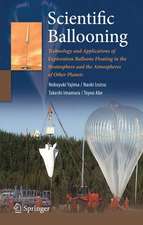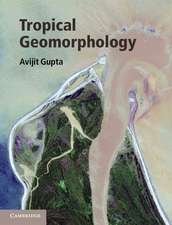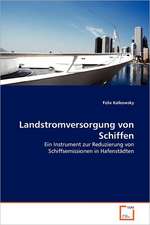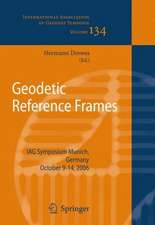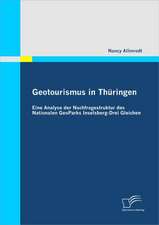Sustainable Living with Environmental Risks
Editat de Nobuhiro Kaneko, Shinji Yoshiura, Masanori Kobayashien Limba Engleză Paperback – 26 mar 2014
Preț: 494.48 lei
Nou
Puncte Express: 742
Preț estimativ în valută:
94.63€ • 102.75$ • 79.49£
94.63€ • 102.75$ • 79.49£
Carte tipărită la comandă
Livrare economică 22 aprilie-06 mai
Preluare comenzi: 021 569.72.76
Specificații
ISBN-13: 9784431548034
ISBN-10: 4431548033
Pagini: 300
Ilustrații: XV, 286 p. 89 illus., 70 illus. in color.
Dimensiuni: 155 x 235 x 20 mm
Greutate: 0.58 kg
Ediția:2014
Editura: Springer
Colecția Springer
Locul publicării:Tokyo, Japan
ISBN-10: 4431548033
Pagini: 300
Ilustrații: XV, 286 p. 89 illus., 70 illus. in color.
Dimensiuni: 155 x 235 x 20 mm
Greutate: 0.58 kg
Ediția:2014
Editura: Springer
Colecția Springer
Locul publicării:Tokyo, Japan
Public țintă
GraduateCuprins
Introduction.- Development Programme for Sustainable Living with Environmental Risks.- Overviews of Environmental Risk Management and Sustainability.- Land, agriculture, forestry and mangrove.- Biodiversity agriculture supports human populations.- Sustainable Management of Mangrove Forest.- Conservation and sustainable management of soil biodiversity for agricultural.- Conservation Tillage Assessment for Mitigating Greenhouse Gas Emission in Rainfed Agroecosystem.- Improvement biodiversity in Paddy Fields to Promote Land Sustainability.- Agroforestry models for promoting effective risk management and building sustainable communities.- Managing environmental risks and promoting sustainability: the case of Forest resources in Madagascar.- Sustainable forest management - achievements and challenges based on the case study in Thailand.- Chemical, waste, urban environment.- Risk management of Chemical Pollutants.- Evaluation of variable stiffness of wind turbine tower with consideration of flange - joint separation.- A research on phase separation and effect of phase separation inhibitors in Gasohol.- Research the correlation between chlorophyll-A and organic matter BOD, COD, phosphate and total nitrogen in the stagnant.- Sustainable Management of Urban Green Environments: Opportunities and Challenges.- Managing Construction Development Risks to the Environment.- Role of Communities in waste management to address environmental risks.- Ecosystems, food security, disaster and livelihood.- Necessity of adaptive risk management in fisheries and wildlife.- Ecological Impacts of Land Use Changes on Food and Health Security in Southeast Asia.- Community-Based Lake Sanctuary for Native Fish Restoration and Livelihood.- Peatland Resources: Fire Prevention and Sustainable Biodiversity Management.- Strengthening Capacity of Flood Affected Rural Communities in Padang Terap, State of Kedah, Malaysia.- Ecosystem Restoration with Near-natural Method in Shanghai.- Coastal Erosion Mitigation in Fort Dauphin, Madagascar.- Policy and institutional development, education and capacity development.- Environment and social capacity assessment for sustainability promotion and risk management.- Enhancing students' ecological thinking to improve understanding of environmental risk.- Interactive Multimedia Education System (IMES) as a International Education Platform.
Textul de pe ultima copertă
We are not free from environmental risks that accompany the development of human societies. Modern economic development has accelerated environmental pollution, caused loss of natural habitats, and modified landscapes. These environmental changes have impacted natural systems: water and heat circulation, nutrient cycling, and biodiversity. These changes in natural systems degrade ecosystem services and subsequently increase environmental risks for humans. Environmental risks, therefore, are not only human health risks by pollution, climatic anomalies, and natural disasters, but also degradation of ecosystem services on which most people are relying for their lives. We cannot entirely eliminate the risks, because it is not possible to attain zero impact on the environment, but we need to find a mechanism that minimizes environmental risks for human sustainably. This is the idea of the interdisciplinary framework of “environmental risk management” theory, which advocates harmony between economic development and environmental conservation. Based on this theory, the Sustainable Living with Environmental Risk (SLER) programme, adopted by the Japanese Ministry of Education (MEXT) as one of its strategic programmes, has been training graduate students at the Yokohama National University, Japan, from 2009 to 2013 to become future environmental leaders who will take the initiative in reducing the level of environmental risks and in protecting natural resources in the developing nations of Asia and Africa. This book provides students and teachers of this new academic field with a comprehensive coverage of case studies of environmental risks and their practical management technologies not only in Japan but also in developing nations in Asia and Africa.
Caracteristici
Compiles practical technologies for coping with environmental risks in Asia and Africa
Provides solutions to maintain harmony between economic development and environmental preservation
Explains the role of international higher education for nurturing environmental-conscious leaders
Includes supplementary material: sn.pub/extras
Provides solutions to maintain harmony between economic development and environmental preservation
Explains the role of international higher education for nurturing environmental-conscious leaders
Includes supplementary material: sn.pub/extras

